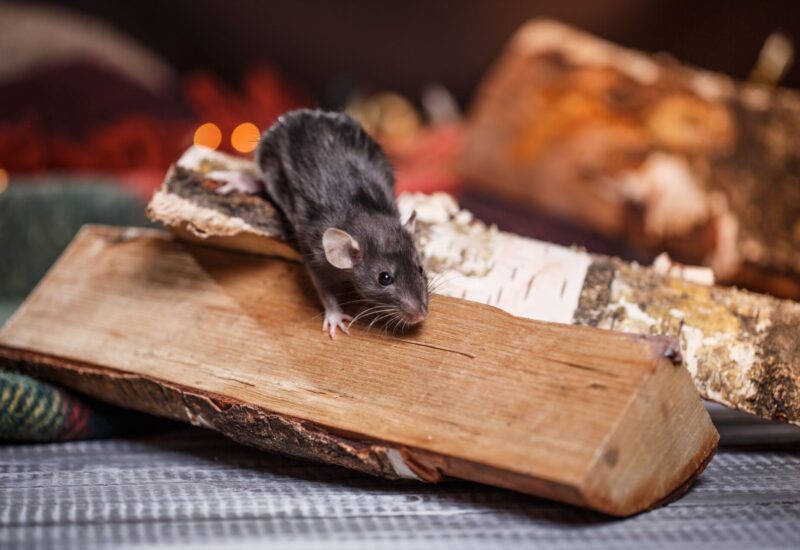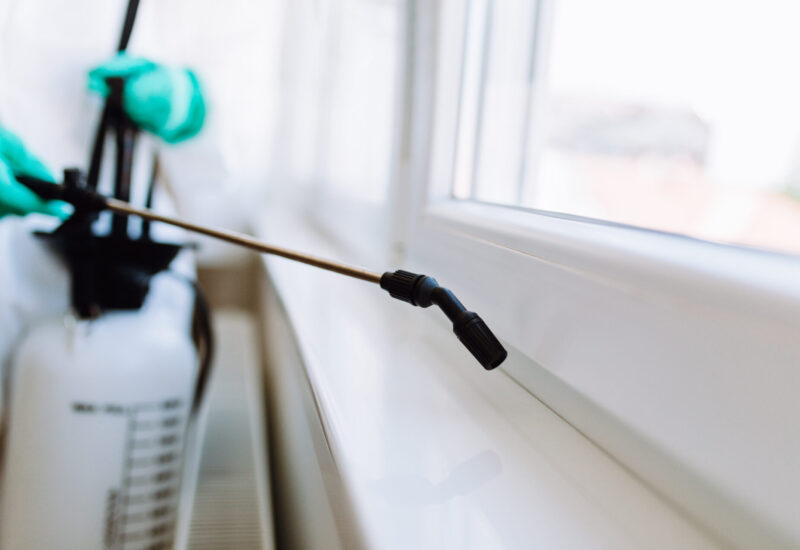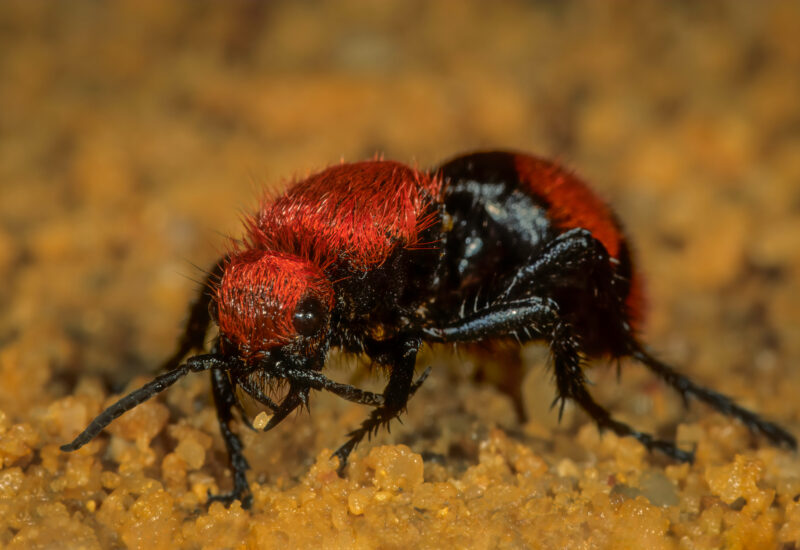USDA 2021 Efforts to Eradicate Invasive Asian Longhorned Beetle
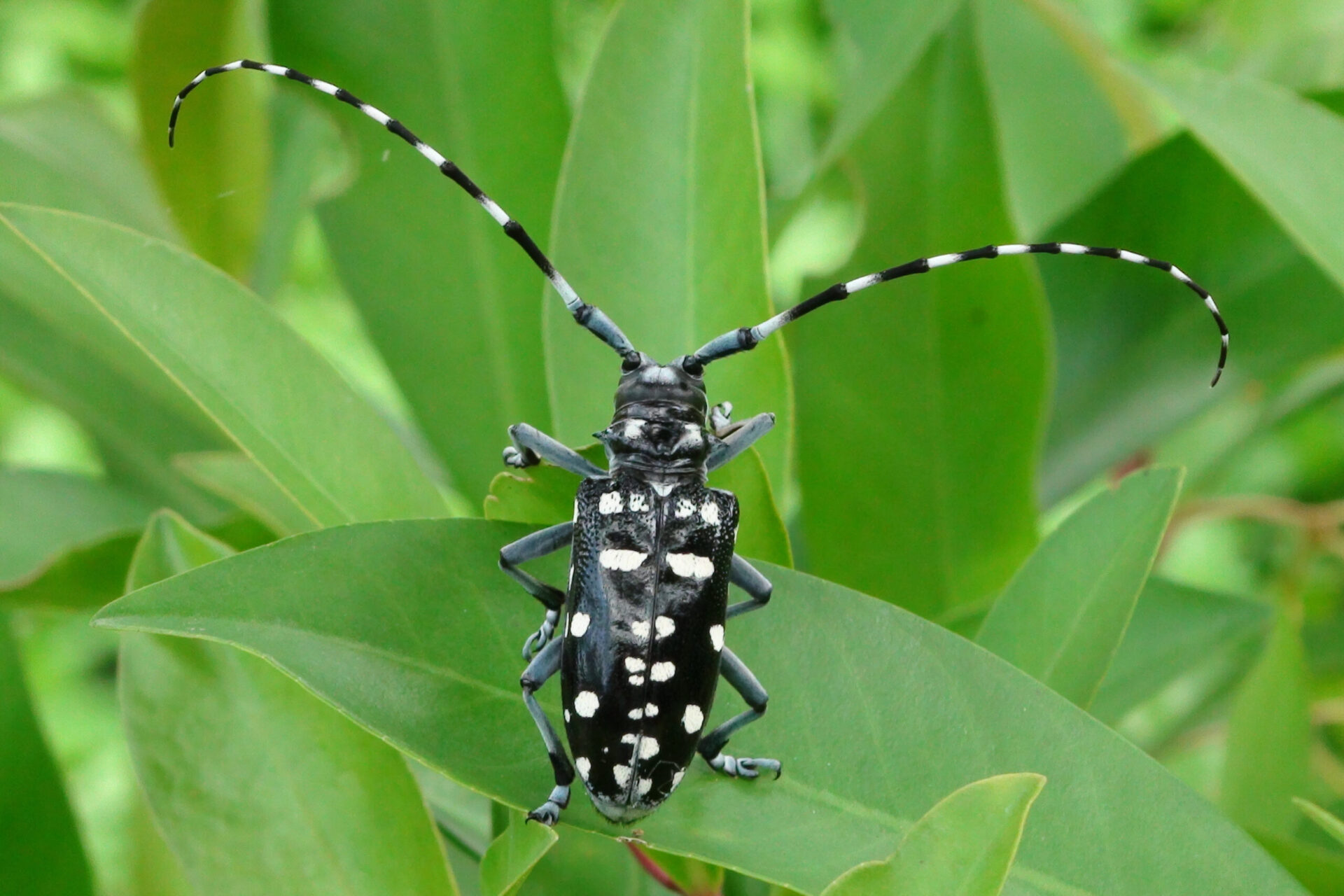
Learn About the 2021 National Asian Longhorned Beetle Eradication Project to Remove the Invasive Pest From the Most Affected States
In 1996, the United States received influxes of Chinese exports in raw wooden packaging material.
Little did anyone know that such cargo also transported an invasive species — the Asian longhorned beetle (Anoplophora glabripennis) or ALB — right onto U.S. soil.
The first sighting of the nonnative beetle was reported in New York of that same year. The wood-eating pest quickly spread to other parts of the country, especially the Northeast. States like Massachusetts and New Jersey started facing severe infestations.
Today, Asian longhorned beetles threaten the country’s valuable forest resources and national reserves that are worth billions.
As a result, the foreign beetle has been engaged in an ongoing battle with the United States Department of Agriculture (USDA). The USDA’s efforts successfully eradicated the invasive pests from Illinois in 2014, New Jersey in 2013, and parts of New York between 2013 and 2019.
But the problem still persists. Acute numbers of ALB infected trees have been discovered in Massachusetts, New York, Ohio, and South Carolina.
Now, the USDA’s 2021 Asian longhorned beetle eradication program is focused on combatting the foreign beetle infestation in, what are currently, the most affected states.
Current USDA Efforts to Expel the Asian Longhorned Beetle From the Eastern U.S.
In 2021, the USDA’s Animal and Plant Health Inspection Service (APHIS) is cracking down on Asian longhorned beetle infestations by quarantining highly infected areas in Massachusetts, New York, Ohio, and South Carolina.
The federally quarantined areas include:
- 110 square miles in Worcester County, Massachusetts
- 53 square miles in Long Island, New York
- 56.5 square miles in Clermont County, Ohio
- 76.4 square miles in Charleston and Dorchester Counties of South Carolina
Property owners in these areas can rest easy as USDA APHIS experts remove and treat infested trees for free. And this year, the APHIS is not using insecticides.
Instead, program officials want to focus on removal of infected trees and treatment of high risk trees.
Ultimately, the goal of the 2021 USDA APHIS Asian longhorn beetle eradication program is to eliminate the invasive beetles from the U.S. through environmentally friendly practices.
Upon discovery of infected trees, APHIS teams completely remove them from the premises. This includes uprooting the host trees’ stumps, roots, and all shoots.
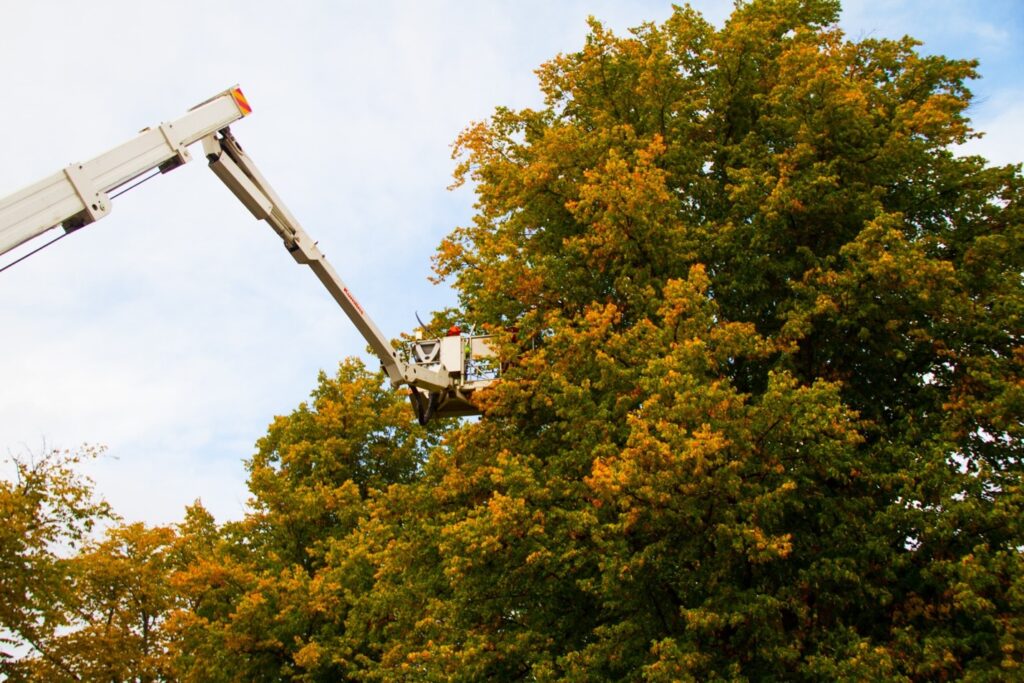
Enclosed trucks transport all infected materials away from the quarantined site(s), so no ALB debris escapes. The infested components are then incinerated.
Although such removal practices may seem extreme, they eliminate any chance of reinfestation. To stop the spread, all infested sprouts and foliage of a host tree must be completely destroyed.
High risk trees within the quarantined site(s) are treated before infestation can begin with herbicides or other chemical agents — except for insecticides.
This reinforces high risk trees to withstand or repel Asian longhorn beetle infestations until experts can completely eradicate the pests from all surrounding areas.
The Damaging Effects of Asian Longhorned Beetles on Hardwood Forests
Since their arrival in 1996, Asian longhorned beetles’ parasitic effects on their hardwood hosts have resulted in the removal of over 30,000 trees.
The subsequent damage to recreational areas, forest reserves and national parks has cost state and federal governments over $269 million.
Trees that host these invasive beetles die within 10 years, with no chance of regrowth or recovery. They simply rot away, allowing more Asian longhorned beetles to spread and infect surrounding trees.
Asian longhorned beetle infestations cause more collective damage than gypsy moths and contagious tree diseases — such Dutch elm disease and chestnut tree blight — combined.
But the potential losses are even greater.
If left unaddressed, Asian longhorn beetles could cost tree-reliant industries — such as lumber, maple syrup production, and fall-foliage tourism over $41 billion in losses.
The potential number of destroyed trees could reach 1.2 billion. This translates into a nationwide economic loss of $669 billion.
Signs of An ALB Infestation
Asian longhorned beetles originated from East Asia, namely China, Japan, and Korea. By infesting wooden crates used to deliver imported goods into the U.S., the species infiltrated the country’s national forests.
Most hardwood deciduous trees fall victim to the Asian longhorned beetle, including:
- Maple trees
- Birch trees
- Chestnut trees
- Elmwood trees
- Poplar trees
- Willow trees
- Ash trees
- Horse trees
Using their mandibles or jaws to drill dime-sized holes into the bark of trees, Asian longhorned beetles turn hardwood trunks into hollow chambers to store their eggs.
Beetle types that exhibit such behavior are called borers because they “bore” into wood.
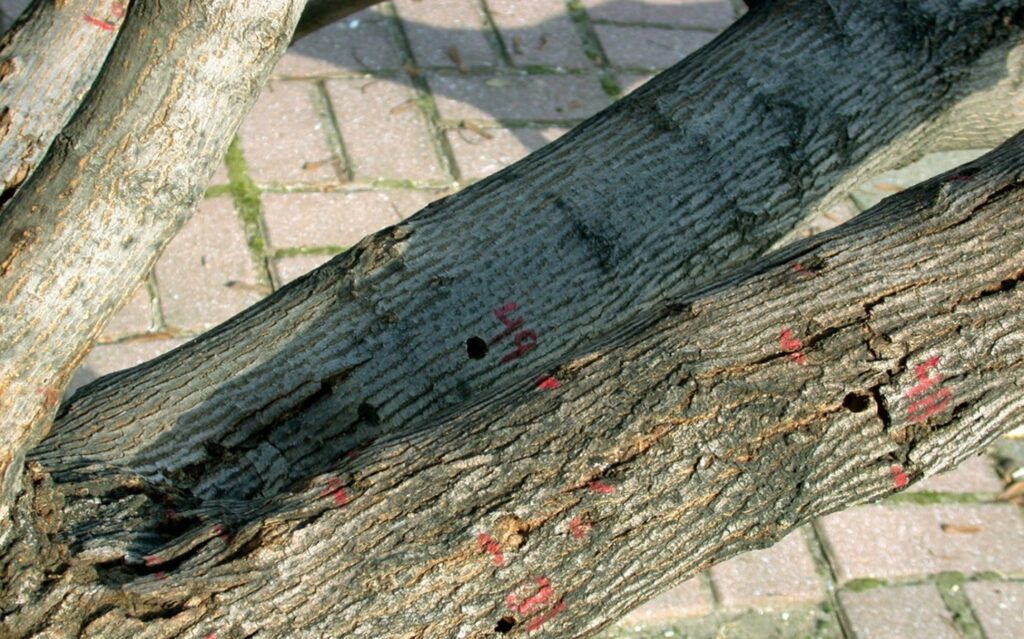
A single female Asian longhorned beetle can lay up to 90 eggs in her lifetime. Typically, these eggs are stored under tree bark. Asian longhorned beetle eggs resemble white rice grains.
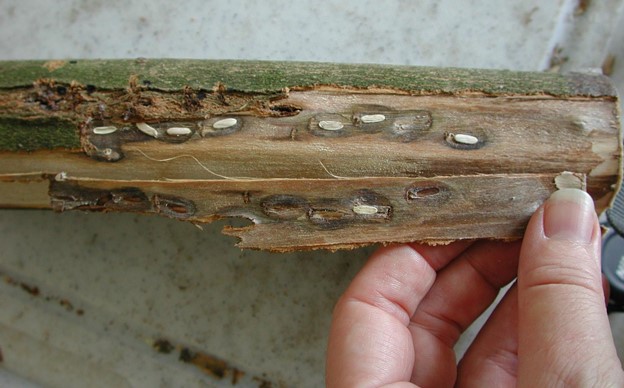
In addition to tunneling under bark and hollowing out trees to make room for their eggs, Asian longhorn beetles also eat the bark, wood, and leaves.
When Asian longhorned beetle eggs hatch, the babies, called larvae, remain inside their birth chambers until after the pupal stage, where they mature into adults.
During their immature years as larvae and pupae, the beetles look like small cream-colored or brown grubs.
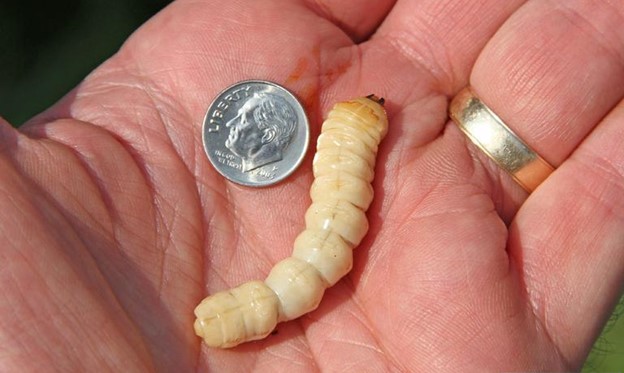
It takes a year for this invasive beetle to grow up. Prior to adulthood, immature Asian longhorned beetles live safely within the trees they were born in. They eat the trees’ woody tissue for nutrients.
To survive winters, the invasive beetle’s larvae burrow deeper inside trees, lining the resulting tunnels and chambers with their own excrement, known as frass. Frass looks like sawdust. This substance acts as an insulator for ALB larvae, but obstructs trees’ vascular systems, killing them from the inside out.
Infected trees are riddled with holes. Sap seeps from the bark, making infected trees look as if they’re bleeding syrup.
The insides of infected trees appear rotted. Hollow chambers housing ALB grubs on beds of frass can be found.
Fully maturated Asian longhorned beetles emerge from their pupal chambers in the summer — mostly from June through July.
Within three weeks after emerging, adult Asian longhorned beetles mate, reproduce, and die. The spread, however, continues through the species’ numerous offspring.
How to Identify Asian Longhorned Beetles
Asian longhorned beetles are big. On average, they reach 1 and-a-half inches in length. Their bullet-shaped bodies are a lustrous black speckled with bright white spots.
These unique markings give the ALB its nickname — the starry sky beetle.
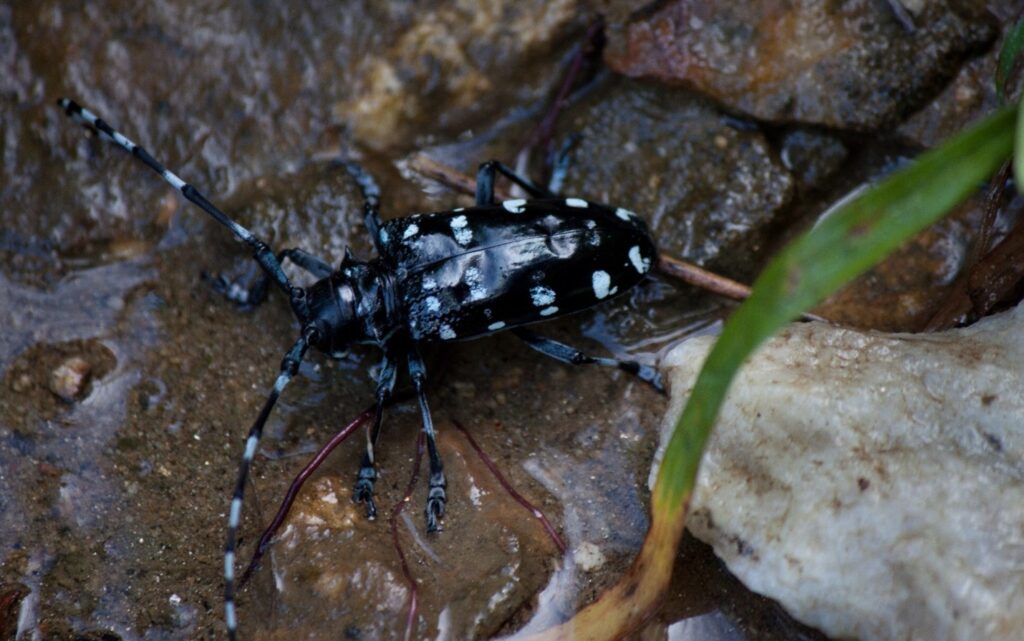
The beetle’s long black and white striped antennae can’t be missed. Paired with their sharp jaws, called mandibles, adult Asian longhorned beetles are quite intimidating.
But its frightful appearance is just that. The invasive beetle is completely harmless to animals and people.
Unless you are made of wood, bark, or leaves, you are in no direct danger of this foreign pest.
Combat Invasive Pests with Catseye
A beautiful yard or property can turn into a nightmare if infested by an invasive, destructive pest like the Asian longhorned beetle.
However, while Catseye Pest Control does not treat for this particular species, our licensed professionals are experts in eradicating many other types of pests.
Lawn pests — including ticks, mosquitoes, hornets, wasps, and more — all pose major threats to both people and property. But tackling an infestation alone is not only dangerous. It’s ineffective.
An untrained individual puts both themselves and others at risk if they confront an infestation without the help of a licensed pest control specialist.
Unlike an untrained individual, a pest control expert has the equipment, know-how, and experience to completely eradicate an infestation safely.
A licensed expert also reinforces the property to ensure a reinfestation does not occur.
Catseye Pest Control’s experienced pest control professionals handle infestations of all insect types, from stinging insects to wood-eating vermin like termites.
Our trained specialists use Integrated Pest Management (IPM) practices to effectively remove any pest from the premises. IPM methods are safe for pets and children. Plus, it’s environmentally friendly.
There are four main steps to the IPM approach:
- Inspection — pest control specialists conduct a meticulous analysis of the property to assess the severity of the infestation.
- Identification — from the inspection, we determine what kind of pest is infesting the home, how it is infesting the home, and what to do to stop them.
- Treatment — using organic and environmentally friendly pest products, we treat the affected area accordingly.
- Partnership — our pest control experts regularly communicate with clients and install monitoring devices throughout the property to consistently surveil the affected area for suspicious activity even after treatment is completed.
With Catseye Pest Control, homeowners and property owners can rest assured their infestations are properly eradicated. Contact us today for a free inspection.


